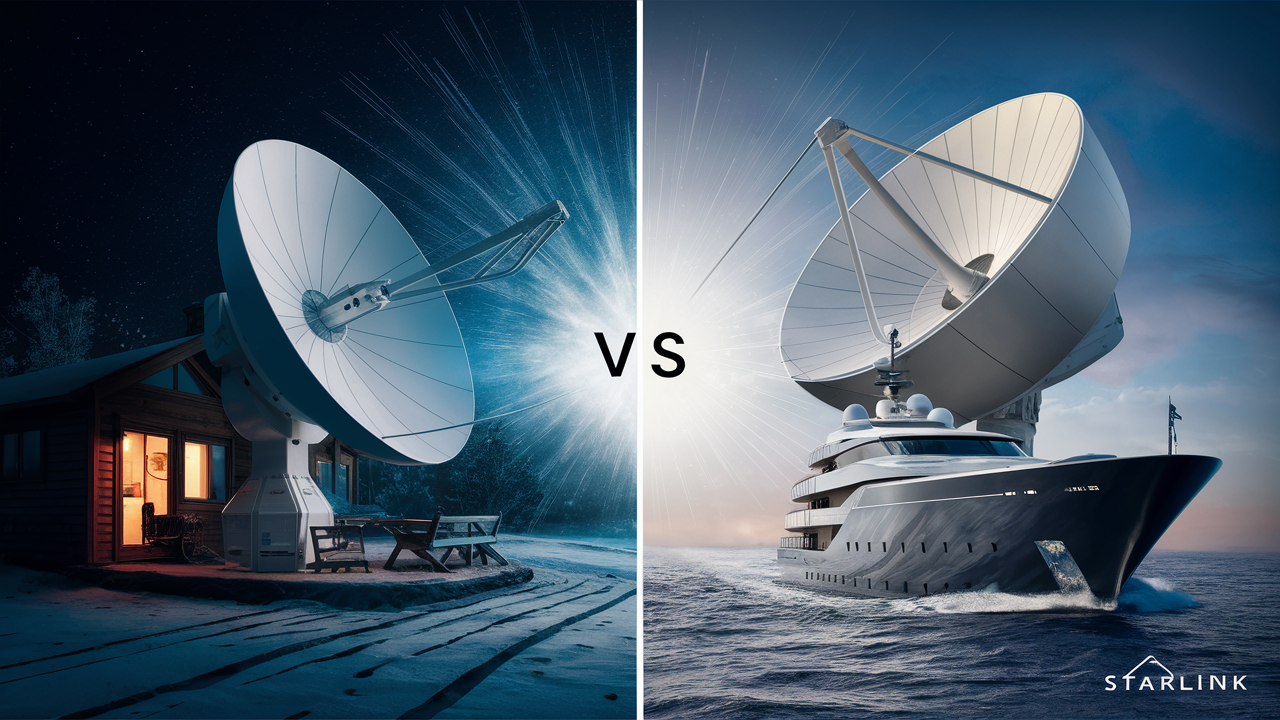In today’s connected world, reliable internet is essential—whether you’re working from home, streaming your favorite shows, or staying in touch with loved ones. But for millions of people in rural or remote areas, traditional internet options like cable, DSL, or fiber are simply not available. That’s where Viasat Internet comes in. But how does Viasat Internet work? This guide will walk you through the technology, installation, and benefits of Viasat’s satellite internet service.
What Is Viasat Internet?
Viasat Internet is a high-speed satellite internet service provided by Viasat, Inc., a global leader in satellite communications. Unlike traditional internet services that rely on cables or phone lines, Viasat Internet uses satellites orbiting the Earth to deliver connectivity to homes, businesses, and even moving vehicles like aircraft and ships. This makes it a vital service for people in areas where other internet options are unavailable or unreliable.
Key Fact: Viasat Internet delivers high-speed internet to rural and remote areas using satellites, bypassing the need for ground-based infrastructure like cables or phone lines.
How Does Viasat Internet Work?
At its core, Viasat Internet works by transmitting data between your home and the internet via satellites in space. Here’s a step-by-step breakdown of the process:
1. The Satellite Dish
A professional installer attaches a satellite dish (also called an antenna) to your home or business. This dish is typically mounted on your roof, an exterior wall, or a pole with a clear view of the southern sky. The dish is responsible for both sending and receiving signals to and from the satellite.
2. The Satellite
Viasat uses geostationary satellites, which orbit the Earth at the same speed as the planet’s rotation. This means the satellite stays in a fixed position relative to the Earth’s surface, providing continuous coverage to a specific geographic area. The satellite receives signals from your dish, amplifies them, and retransmits them to a ground station connected to the internet.
3. The Ground Station
The ground station (also called a network operations center or data center) is a facility on Earth that is connected to the internet via high-speed fiber optic cables. When you send a request, such as loading a webpage or streaming a video, the signal travels from your dish to the satellite, then to the ground station, which retrieves the data from the internet.
4. The Return Journey
After processing your request, the data travels back from the ground station to the satellite, then down to your dish, and finally to your device. This two-way communication happens in a matter of seconds, allowing you to browse, stream, and communicate online.
5. The Modem and Router
The satellite dish is connected to a modem inside your home via a coaxial cable. The modem translates the satellite signal into a usable internet connection. A built-in or separate router then creates a WiFi network, allowing you to connect multiple devices, such as smartphones, laptops, and smart TVs, to the internet.
Key Components of Viasat Internet
To summarize, here are the main components involved in every Viasat Internet connection:
- Satellite Dish: Installed outside your home to send and receive signals from the satellite.
- Satellite: Orbiting the Earth, relaying signals between your dish and the ground station.
- Ground Station: Connected to the internet via fiber, processing your requests and sending data back.
- Modem: Translates the satellite signal into an internet connection for your home.
- Router: Creates a WiFi network for your devices.
How Is Viasat Internet Installed?
Viasat Internet requires professional installation to ensure optimal performance. Here’s what you can expect during the installation process:
- Site Survey: The installer assesses your property to find the best location for the dish, ensuring a clear line of sight to the satellite.
- Dish Installation: The dish is mounted on your roof, wall, or pole and securely anchored to withstand weather conditions.
- Cable Routing: A coaxial cable is run from the dish to your home, usually through a small hole drilled in an exterior wall.
- Modem and Router Setup: The cable is connected to a modem inside your home, which is then connected to a router to create a WiFi network.
- Testing and Activation: The installer tests the connection, activates your service, and ensures all your devices can connect to the internet.
The entire installation process typically takes less than three hours.
Viasat Internet Technology: Geostationary Satellites
Viasat’s satellites are positioned in geostationary orbit, about 22,000 miles above the Earth’s surface[5][8]. This orbit allows the satellite to remain fixed relative to a specific location on Earth, providing continuous coverage to a wide area. While this setup ensures reliable service, it also introduces higher latency (delay) compared to low Earth orbit (LEO) satellites like those used by Starlink.
Tip: Geostationary satellites provide wide coverage but have higher latency, while LEO satellites offer lower latency but require more satellites for global coverage.
How Does Viasat Compare to Other Internet Providers?
Viasat Internet is one of several options for getting online, but it stands out in several ways:
| Provider | Type | Coverage | Speed | Latency | Best For |
|---|---|---|---|---|---|
| Viasat | Satellite (Geostationary) | Rural/remote, global | Up to 150 Mbps | High (600+ ms) | Rural/remote households, businesses |
| Starlink | Satellite (LEO) | Global, expanding | Up to 220 Mbps | Low (25–60 ms) | Rural/remote, gaming, video calls |
| HughesNet | Satellite (Geostationary) | Rural/remote | Up to 100 Mbps | High (600+ ms) | Light internet use, basic connectivity |
| Cable/Fiber | Ground-based | Urban/suburban | Up to 1,000+ Mbps | Low (5–30 ms) | Urban/suburban households, businesses |
Viasat’s main advantages are its wide coverage and high-speed connectivity in areas where other options are unavailable. However, its higher latency makes it less suitable for real-time activities like online gaming and video calls compared to cable, fiber, or LEO satellite services.
Benefits of Viasat Internet
- Wide Coverage: Viasat Internet is available in most rural and remote areas of the United States and beyond, including Mexico, Central America, and the Caribbean.
- High-Speed Connectivity: With download speeds up to 150 Mbps, Viasat is one of the fastest satellite internet providers available.
- Reliable Service: Satellite internet is less likely to be affected by local outages or damage to ground infrastructure, making it highly resilient in emergencies.
- Easy Installation: Professional installation ensures your service is set up correctly and optimized for the best performance.
- Flexible Plans: Viasat offers a range of plans to suit different needs and budgets, including unlimited data options.
Limitations of Viasat Internet
- High Latency: Due to the distance to geostationary satellites, Viasat Internet has higher latency than cable, fiber, or LEO satellite services.
- Weather Sensitivity: Heavy rain, snow, or thick clouds can temporarily disrupt your connection.
- Data Caps: While some plans offer unlimited data, speeds may be reduced during network congestion if you exceed typical usage.
- Equipment Fees: There are monthly equipment lease fees or a one-time purchase cost for the satellite dish and modem.
Who Is Viasat Internet For?
Viasat Internet is ideal for:
- Rural and Remote Households: Where cable, DSL, or fiber internet is not available.
- Small Businesses That need reliable internet in underserved areas.
- Travelers and RV Owners: Some Viasat plans are portable and can be used on the go.
- Emergency and Disaster Response: Satellite internet can be quickly deployed in disaster areas to restore connectivity.
Frequently Asked Questions
How does Viasat Internet work?
Viasat Internet uses a satellite dish to send and receive signals to a geostationary satellite, which relays data between your home and a ground station connected to the internet.
Is Viasat Internet available everywhere?
Viasat Internet is available in most rural and remote areas of the United States, Mexico, Central America, and the Caribbean.
How fast is Viasat Internet?
Viasat offers download speeds up to 150 Mbps in select areas.
Does Viasat Internet have data caps?
Some Viasat plans offer unlimited data, but speeds may be reduced during network congestion if you exceed typical usage.
Can I install Viasat Internet myself?
No, Viasat requires professional installation to ensure optimal performance.
Conclusion
Viasat Internet is a powerful solution for connecting homes and businesses in rural and remote areas where traditional internet options are unavailable. By leveraging advanced satellite technology, Viasat delivers high-speed, reliable internet to millions of people around the world. While it has some limitations, such as higher latency and weather sensitivity, its wide coverage and easy installation make it a top choice for anyone needing connectivity beyond the reach of cable or fiber.
Summary: Viasat Internet works by transmitting data between your home and the internet via geostationary satellites. A professional installer sets up a satellite dish at your location, which connects to a modem and router inside your home. This system delivers high-speed, reliable internet to rural and remote areas, making Viasat a vital service for millions of users worldwide.





